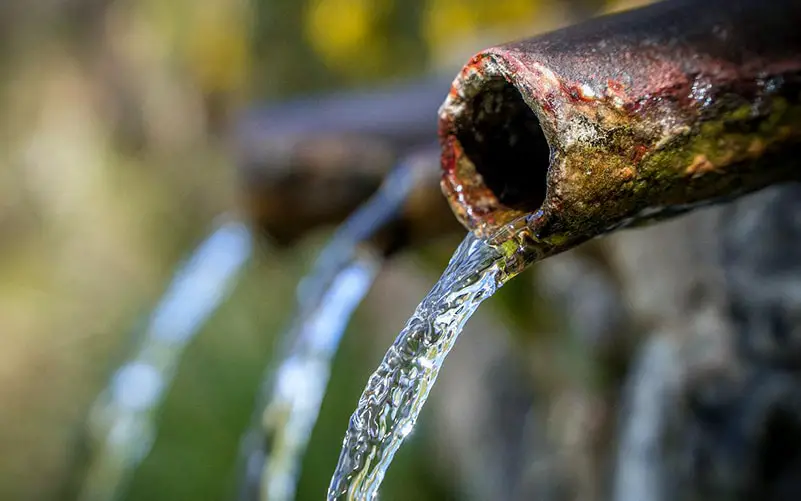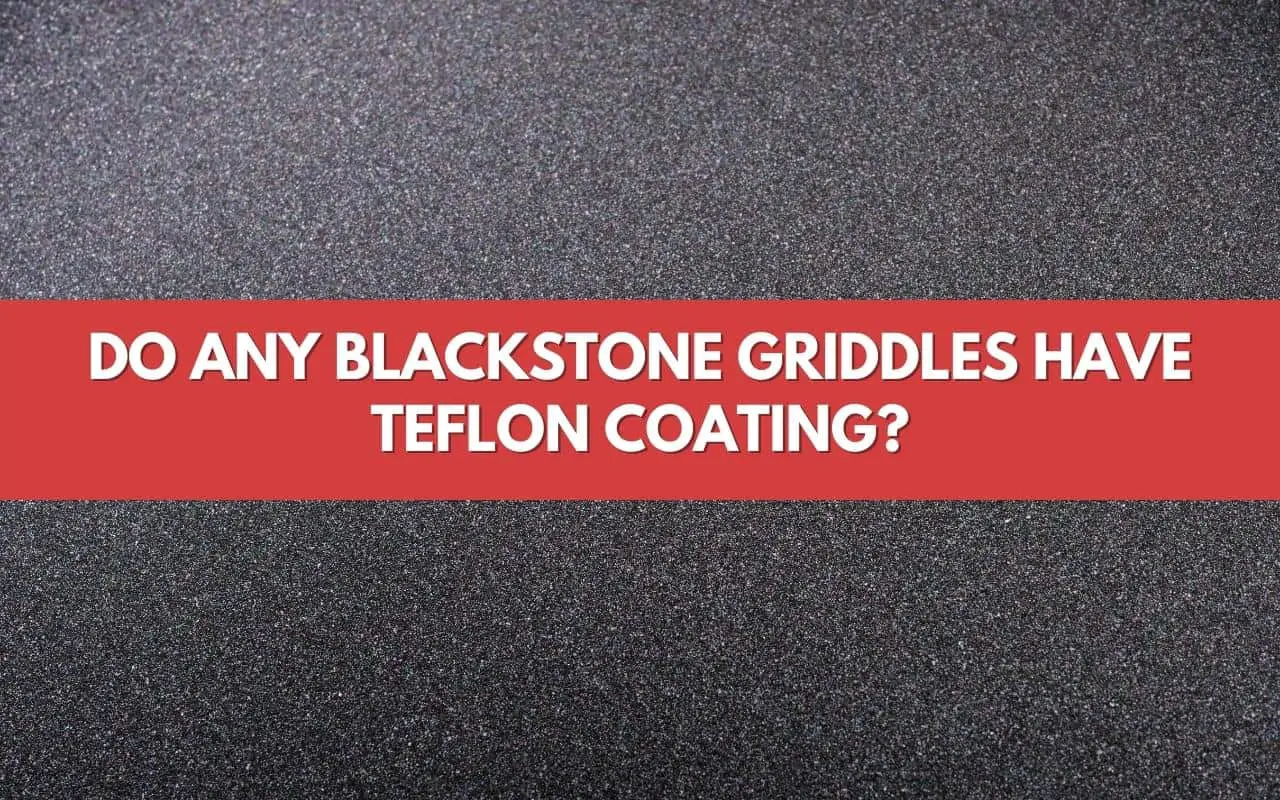Are you eyeing a Blackstone griddle but are worried about the potential health hazards of cooking with Teflon? That’s a valid concern – after all, Teflon coatings have received a lot of bad press.
So do Blackstone griddles have Teflon? Should you worry about their safety?
Don’t worry!
None of the currently sold Blackstone griddles have Teflon coating. The gas griddles which are the most popular among the Blackstone griddle range don’t have any coating at all. The electric Blackstone griddles do have a non-stick coating but it is not made of Teflon. Instead, the E-series griddles come with ceramic-titanium coated top plates.
So here’s your quick answer. If you’d like to learn more about the surfaces of the Blackstone griddles and about Teflon and the potential problems associated with cooking with it, read on.
Table of Contents
- What Is Teflon?
- Why is Teflon Controversial?
- Do Blackstone Gas Griddles Have Any Coating?
- Do Blackstone Electric Griddles Have Any Coating?
- Final Thoughts
- FAQ
What Is Teflon?
Teflon is a registered trademark of the Chemours company and is the brand name for a group of synthetic fluoropolymer products. Usually, Teflon refers to polytetrafluoroethylene (PTFE) which is a synthetic fluoropolymer of tetrafluoroethylene.
It is a waxy white solid that is very slippery.
PTFE was accidentally discovered in 1938 by Dr. Roy J. Plunkett while he was trying to develop a new refrigerant.
What Is Teflon Used For?
Teflon or PTFE is used in many different products because of its unique properties.
To the general public, PTFE is probably the most well-known for its non-stick properties. That’s why it’s often used in cookware as a coating. It’s also used in many other products where a low-friction surface is needed such as:
- Lubricants and greases
- Air filters
- Thread seal tape – used by plumbers
- Water-resistant membrane – for example, used in Gore-Tex products
- Electrical insulation
- Many medical and healthcare applications – such as in catheters
- Mouse feet – PTFE is especially useful in gaming mice as it greatly reduces friction between the mouse and the mouse pad allowing for quick and smooth movements
- And many more
As you can see, PTFE is an incredibly versatile material and is used in many different products across a wide range of industries making it an indispensable part of our modern world.
Why is Teflon Controversial?
Now that we know what Teflon is and what it’s used for, let’s take a look at why it has received so much bad press.
Here are some of the reasons for the controversy:
1. PFOA
PFOA or perfluorooctanoic acid is a man-made chemical that was used in the process of making Teflon and other fluoropolymer products. It has been classified as a “likely human carcinogen” by the EPA. However, PFOA is not used in the process of making Teflon anymore, at least in the United States. It might still be used in other countries.
As PFOA was only used in the manufacturing process it is not present or is present in extremely small amounts in actual Teflon-coated kitchenware products.
PFOA is currently more of a concern for drinking water contamination.
2. Polymer fume fever
Polymer fume fever or the Teflon flu is a short-term illness that can occur when someone is exposed to fumes released by overheated Teflon or other fluoropolymers.
Teflon starts to break down and release these fumes when it reaches a temperature of about 570 degrees Fahrenheit or 300 degrees Celsius.
According to Healthline.com, symptoms of exposure include chills, fever, headache, and body aches.
While it may sound like a serious concern, the thing is that your pan should never reach these temperatures when cooking. If it does, you are likely doing something wrong. Teflon-coated pans are not recommended for searing steaks, get a cast iron pan instead.
3. Teflon flaking off
Another concern is that Teflon might start to flake off into your food if the kitchenware is scratched or damaged. While this is may look like a valid concern, there are still two camps on this issue.
On the one hand, some claim that Teflon is safe and that any flakes that come off are so small that they pose little to no health risk. After all, PTFE is used in many medical applications.
On the other hand, some claim that ingesting Teflon flakes can lead to health problems.
4. Environmental concerns
While PTFE is an important part of our modern world, it is not biodegradable and can stick around in the environment for a very long time. Also, during the manufacturing process, potentially harmful chemicals are released into the environment, polluting water, air, and soil.

Do Blackstone Gas Griddles Have Any Coating?
The most popular Blackstone griddles are the gas-powered ones. And if you’re worried about Teflon or any other kind of coating, you’ll be happy to know that these griddles don’t have any coating at all.
As I’ve mentioned in another article, the cooking surface on gas Blackstone griddles is made of cold-rolled steel. This material is durable and long-lasting. It also heats up quickly and relatively evenly, so you won’t have to worry about any major hotspots. The smooth surface of the steel also makes it easy to clean.
The unfortunate downside of cooking on bare steel is that without proper treatment, the food will stick to the surface. That’s why it’s important to season the griddle with appropriate cooking oil before use and to make sure that you season it after each cooking session.
With proper care, the steel surface will develop a natural non-stick patina with time which will make cooking and cleaning even easier.
Do Blackstone Electric Griddles Have Any Coating?
The electric Blackstone griddles do have a non-stick coating but it is not made of Teflon. Instead, the electric griddles have ceramic-titanium coated tops.
This type of coating is slightly more durable than Teflon and can withstand higher temperatures without breaking down or releasing harmful chemicals into the food and air as Teflon would.
The disadvantage is that the ceramic-titanium coating is not as non-stick as Teflon.
Also while more durable than Teflon, it is still not anywhere near as durable as the cold-rolled steel used in the gas griddles. This means, that you will have to forget about using the shiny metal spatulas on these griddles. You’ll have to use plastic or wooden utensils instead to avoid damaging the non-stick surface. Oh, and of course, forget about using a knife on the griddle.
One thing to keep in mind is that if you damage the coating of your griddle or any kitchenware and it starts to peel off, it’s time to replace it as it may no longer be safe to use.
Final Thoughts
So, if you’re worried about Teflon coating, you can rest assured that neither the gas nor the electric Blackstone griddles have any Teflon coating. The gas griddles have a bare steel surface while the electric griddles have a ceramic-titanium coating.
With proper care and maintenance, both types of griddles will serve you well for many years to come.
FAQ
Is it necessary for a griddle to have a non-stick coating?
No, it is not necessary. There are many types of griddles on the market that don’t have any non-stick coating. The most popular ones are probably the cast iron griddles.
What are the advantages and disadvantages of having a non-stick coating on a griddle?
The main advantage of having a non-stick coating is that it makes cooking and cleaning easier. The disadvantage is that the coating will eventually wear out and it may not be as durable as the griddle itself.
Do you have to season a griddle with a non-stick coating?
No, you don’t have to season a griddle with a non-stick coating. The whole point of non-stick coatings is that they are non-stick without the need for seasoning.
Can you use metal utensils on a griddle with a non-stick coating?
No, you should not use metal utensils on a griddle with a non-stick coating as they will damage the surface. You should use plastic or wooden utensils instead.
What is the best way to clean a griddle with a non-stick coating?
The best way to clean a griddle with a non-stick coating is to use a soft sponge or cloth and water. Use a bit of mild detergent if necessary. If there’s some burnt food stuck to the surface, you can loosen it up with a bit of vinegar or baking soda before cleaning. Avoid using abrasive cleaners or scrubbers as they will damage the surface.

